-
 Bitcoin
Bitcoin $106,754.6083
1.33% -
 Ethereum
Ethereum $2,625.8249
3.80% -
 Tether USDt
Tether USDt $1.0001
-0.03% -
 XRP
XRP $2.1891
1.67% -
 BNB
BNB $654.5220
0.66% -
 Solana
Solana $156.9428
7.28% -
 USDC
USDC $0.9998
0.00% -
 Dogecoin
Dogecoin $0.1780
1.14% -
 TRON
TRON $0.2706
-0.16% -
 Cardano
Cardano $0.6470
2.77% -
 Hyperliquid
Hyperliquid $44.6467
10.24% -
 Sui
Sui $3.1128
3.86% -
 Bitcoin Cash
Bitcoin Cash $455.7646
3.00% -
 Chainlink
Chainlink $13.6858
4.08% -
 UNUS SED LEO
UNUS SED LEO $9.2682
0.21% -
 Avalanche
Avalanche $19.7433
3.79% -
 Stellar
Stellar $0.2616
1.64% -
 Toncoin
Toncoin $3.0222
2.19% -
 Shiba Inu
Shiba Inu $0.0...01220
1.49% -
 Hedera
Hedera $0.1580
2.75% -
 Litecoin
Litecoin $87.4964
2.29% -
 Polkadot
Polkadot $3.8958
3.05% -
 Ethena USDe
Ethena USDe $1.0000
-0.04% -
 Monero
Monero $317.2263
0.26% -
 Bitget Token
Bitget Token $4.5985
1.68% -
 Dai
Dai $0.9999
0.00% -
 Pepe
Pepe $0.0...01140
2.44% -
 Uniswap
Uniswap $7.6065
5.29% -
 Pi
Pi $0.6042
-2.00% -
 Aave
Aave $289.6343
6.02%
Is algorithmic stablecoin mining reliable? How to avoid the risk of depegging?
Algorithmic stablecoin mining offers high APYs but carries significant depegging risks due to reliance on market confidence and smart contracts.
Jun 16, 2025 at 10:50 am

What is Algorithmic Stablecoin Mining?
Algorithmic stablecoin mining refers to the process of earning rewards by participating in the issuance or stabilization mechanisms of algorithmic stablecoins, which are digital assets designed to maintain a stable value relative to a fiat currency like the US dollar. Unlike traditional stablecoins backed by reserves, algorithmic stablecoins rely on smart contracts and supply adjustments to maintain their peg.
Participants can earn tokens by staking, providing liquidity, or engaging in rebase events. These activities are often incentivized through high annual percentage yields (APYs) to encourage participation and stabilize the coin’s price. However, due to the nature of these systems, the reliability of algorithmic stablecoin mining remains a topic of significant debate within the crypto community.
Why Are Algorithmic Stablecoins Prone to Depegging?
The core issue with algorithmic stablecoins lies in their reliance on market confidence and complex economic models rather than tangible assets. When demand for the stablecoin drops, the protocol may automatically reduce supply via rebasing or buybacks. If confidence collapses rapidly, the system may fail to respond effectively, leading to depegging — when the stablecoin falls below its intended $1 value.
Several factors contribute to this instability:
- Market sentiment shifts can trigger panic selling.
- Liquidity pool imbalances may occur if one side of the pair becomes more valuable.
- Smart contract vulnerabilities could disrupt the peg mechanism.
- Regulatory uncertainty around stablecoins can create sudden sell pressure.
These risks highlight why many experts caution against treating algorithmic stablecoin mining as a guaranteed income source.
How Can Miners Avoid Depegging Risks?
To mitigate the risk of depegging, miners should adopt several precautionary strategies:
- Monitor liquidity depth: Ensure that the stablecoin has sufficient trading volume across major decentralized exchanges (DEXs) like Uniswap or Curve Finance.
- Evaluate the team's track record: Projects led by anonymous teams or those without prior successful launches carry higher risks.
- Review tokenomics transparency: A clear and fair distribution model reduces the chances of manipulation or rug pulls.
- Use stop-loss mechanisms: Automate exits from positions when the stablecoin price dips below a certain threshold.
- Diversify across protocols: Avoid putting all capital into a single algorithmic stablecoin project.
By applying these practices, miners can better protect themselves from unexpected devaluation events.
Which Platforms Offer Algorithmic Stablecoin Mining Opportunities?
Several platforms have introduced algorithmic stablecoin mining programs, each with unique mechanics and incentives:
- Fei Protocol (now Tribe DAO): Originally launched as an algorithmic stablecoin called FEI, it used direct incentives and bonding curves to maintain stability.
- OlympusDAO (OHM): Though not a pure stablecoin, OHM operates under a similar principle using bond sales and staking rewards.
- Frax Finance: Combines both collateral-backed and algorithmic components, offering a hybrid approach known as fractional-algorithmic stablecoin mining.
- Tomb Finance: A fully algorithmic stablecoin platform built on Fantom, offering yield farming and staking opportunities tied to TOMB and its share token, TSHARE.
- Dynamic Set Dollar (DSD): Utilizes dynamic supply adjustments and reward pools to stabilize its price.
Each of these platforms requires careful evaluation before participation, especially regarding their historical performance during market volatility.
What Technical Steps Should Be Taken Before Mining?
Before diving into algorithmic stablecoin mining, users must follow a series of technical steps to ensure safety and efficiency:
- Set up a compatible wallet: Use wallets like MetaMask, Trust Wallet, or WalletConnect that support the blockchain hosting the stablecoin (e.g., Ethereum, Binance Smart Chain, or Fantom).
- Bridge native tokens if necessary: Transfer funds to the correct chain using bridges such as Multichain or Across.
- Approve token spending limits: Always review and approve contract permissions carefully to avoid unauthorized access.
- Provide liquidity cautiously: Only deposit into well-established pools with balanced ratios and verified contracts.
- Track impermanent loss: Understand how price fluctuations affect returns, especially in volatile markets.
- Enable transaction notifications: Use tools like Blockchair or Etherscan alerts to monitor your wallet activity.
These precautions help minimize exposure to scams, hacks, and misconfigurations that are common in early-stage DeFi protocols.
Frequently Asked Questions
Q: Can I lose money investing in algorithmic stablecoins?
Yes, due to their design and dependence on market dynamics, there is a real risk of losing capital if the stablecoin depegs or the underlying protocol fails.
Q: How do rebase events work in algorithmic stablecoin mining?
Rebase events adjust the supply of the stablecoin based on its price deviation from the peg. If the price is above $1, new coins are minted and distributed to stakers; if below, supply is reduced to increase demand.
Q: What role does governance play in algorithmic stablecoin projects?
Governance allows token holders to vote on key decisions like fund allocation, protocol upgrades, and risk parameters. Active and transparent governance helps build trust and long-term viability.
Q: Is it possible for an algorithmic stablecoin to become fully collateralized over time?
Some projects aim to transition toward full collateralization as they grow, but this depends on consistent revenue generation and user adoption, which are difficult to achieve in practice.
Disclaimer:info@kdj.com
The information provided is not trading advice. kdj.com does not assume any responsibility for any investments made based on the information provided in this article. Cryptocurrencies are highly volatile and it is highly recommended that you invest with caution after thorough research!
If you believe that the content used on this website infringes your copyright, please contact us immediately (info@kdj.com) and we will delete it promptly.
- 2025-W Uncirculated American Gold Eagle and Dr. Vera Rubin Quarter Mark New Products
- 2025-06-13 06:25:13
- Ruvi AI (RVU) Leverages Blockchain and Artificial Intelligence to Disrupt Marketing, Entertainment, and Finance
- 2025-06-13 07:05:12
- H100 Group AB Raises 101 Million SEK (Approximately $10.6 Million) to Bolster Bitcoin Reserves
- 2025-06-13 06:25:13
- Galaxy Digital CEO Mike Novogratz Says Bitcoin Will Replace Gold and Go to $1,000,000
- 2025-06-13 06:45:13
- Trust Wallet Token (TWT) Price Drops 5.7% as RWA Integration Plans Ignite Excitement
- 2025-06-13 06:45:13
- Ethereum (ETH) Is in the Second Phase of a Three-Stage Market Cycle
- 2025-06-13 07:25:13
Related knowledge
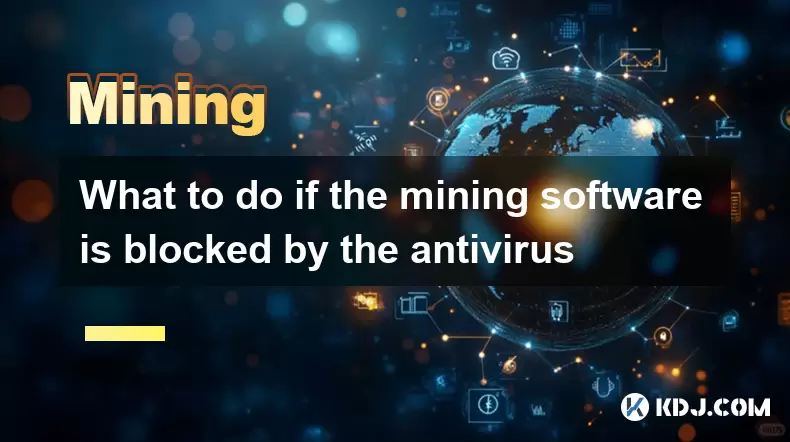
What to do if the mining software is blocked by the antivirus
Jun 13,2025 at 02:43am
Understanding Why Antivirus Software Blocks Mining SoftwareWhen using mining software, it's not uncommon for antivirus programs to flag or block them. This typically occurs because mining software is often associated with malicious activity, especially in the case of cryptojacking attacks where hackers deploy unauthorized miners on unsuspecting systems....
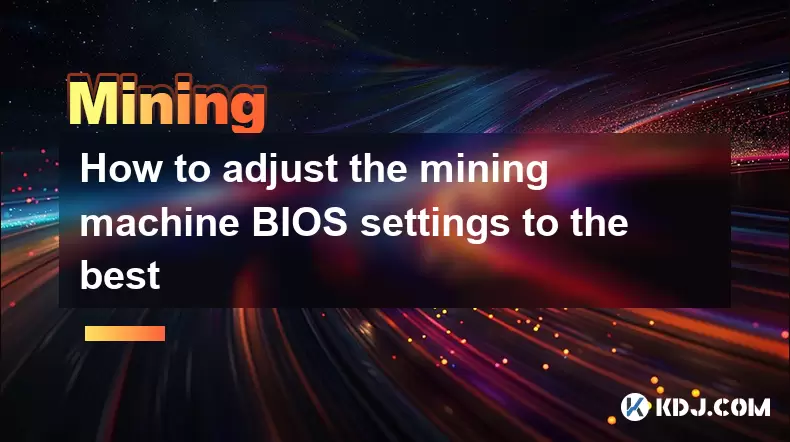
How to adjust the mining machine BIOS settings to the best
Jun 16,2025 at 06:42am
Understanding the Role of BIOS in Mining MachinesThe BIOS (Basic Input/Output System) is a crucial component in any mining machine, especially when optimizing performance for cryptocurrency mining. It acts as the intermediary between the hardware and the operating system, controlling fundamental operations such as boot sequence, power management, and ha...

What is the normal temperature of the graphics card mining memory
Jun 13,2025 at 06:35am
Understanding the Normal Temperature of Graphics Card Mining MemoryThe temperature of graphics card mining memory is a critical factor in maintaining optimal performance and longevity during cryptocurrency mining. While different models of GPUs have varying thermal tolerances, the general normal operating temperature range for mining memory (VRAM) typic...
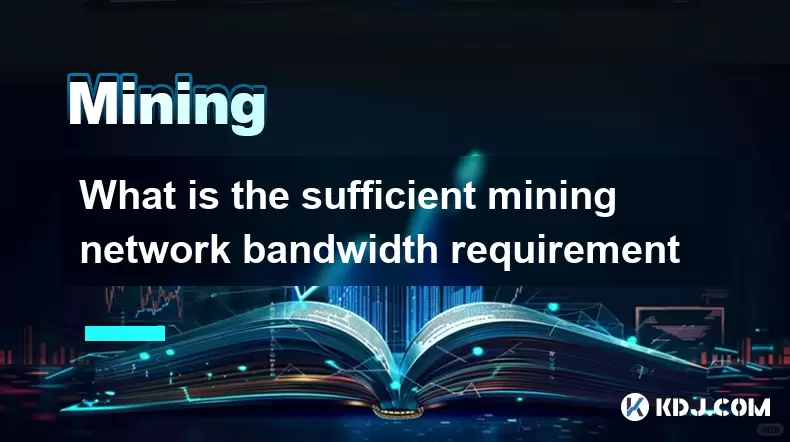
What is the sufficient mining network bandwidth requirement
Jun 12,2025 at 06:35am
Understanding the Basics of Mining Network BandwidthCryptocurrency mining involves solving complex mathematical problems to validate transactions and add them to the blockchain. This process requires constant communication between your mining hardware (such as ASICs or GPUs) and the mining pool or node you are connected to. Network bandwidth refers to t...
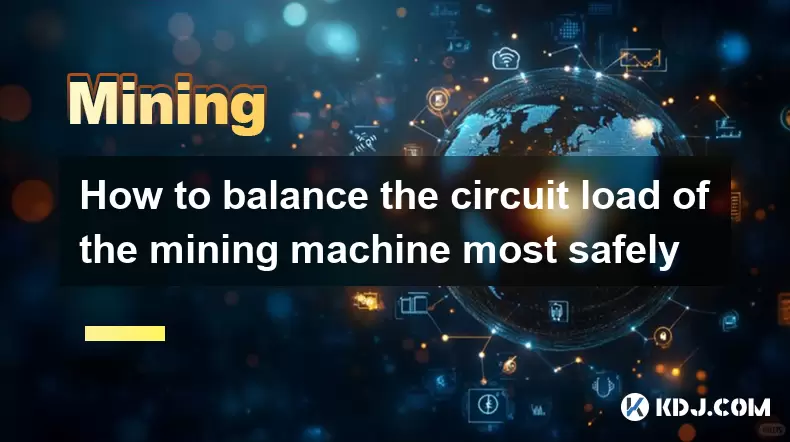
How to balance the circuit load of the mining machine most safely
Jun 16,2025 at 11:57am
Understanding Circuit Load in Mining MachinesMining machines, especially those used for cryptocurrencies like Bitcoin and Ethereum, operate under high electrical demand. The circuit load refers to the amount of power drawn by these devices at any given time. Understanding this concept is crucial because improper management can lead to overheating, reduc...
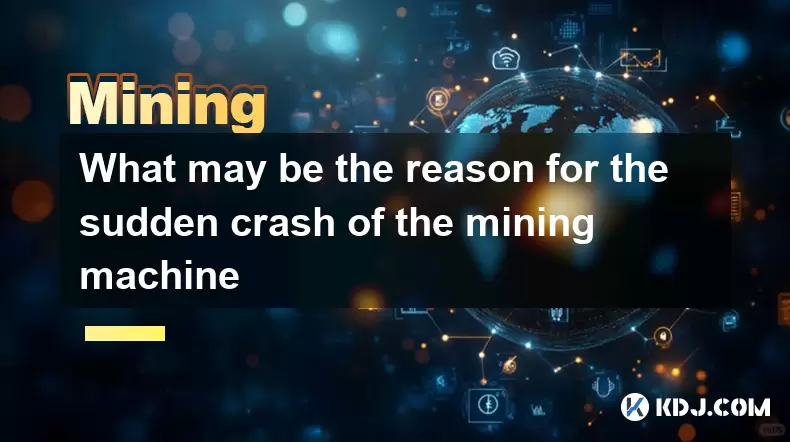
What may be the reason for the sudden crash of the mining machine
Jun 13,2025 at 12:57am
Power Supply IssuesA sudden crash of a mining machine can often be traced back to power supply problems. Mining rigs require stable and sufficient power to operate continuously. If the power supply unit (PSU) is underpowered or malfunctioning, it may not provide enough electricity to all components, especially during peak performance. This could lead to...

What to do if the mining software is blocked by the antivirus
Jun 13,2025 at 02:43am
Understanding Why Antivirus Software Blocks Mining SoftwareWhen using mining software, it's not uncommon for antivirus programs to flag or block them. This typically occurs because mining software is often associated with malicious activity, especially in the case of cryptojacking attacks where hackers deploy unauthorized miners on unsuspecting systems....

How to adjust the mining machine BIOS settings to the best
Jun 16,2025 at 06:42am
Understanding the Role of BIOS in Mining MachinesThe BIOS (Basic Input/Output System) is a crucial component in any mining machine, especially when optimizing performance for cryptocurrency mining. It acts as the intermediary between the hardware and the operating system, controlling fundamental operations such as boot sequence, power management, and ha...

What is the normal temperature of the graphics card mining memory
Jun 13,2025 at 06:35am
Understanding the Normal Temperature of Graphics Card Mining MemoryThe temperature of graphics card mining memory is a critical factor in maintaining optimal performance and longevity during cryptocurrency mining. While different models of GPUs have varying thermal tolerances, the general normal operating temperature range for mining memory (VRAM) typic...

What is the sufficient mining network bandwidth requirement
Jun 12,2025 at 06:35am
Understanding the Basics of Mining Network BandwidthCryptocurrency mining involves solving complex mathematical problems to validate transactions and add them to the blockchain. This process requires constant communication between your mining hardware (such as ASICs or GPUs) and the mining pool or node you are connected to. Network bandwidth refers to t...

How to balance the circuit load of the mining machine most safely
Jun 16,2025 at 11:57am
Understanding Circuit Load in Mining MachinesMining machines, especially those used for cryptocurrencies like Bitcoin and Ethereum, operate under high electrical demand. The circuit load refers to the amount of power drawn by these devices at any given time. Understanding this concept is crucial because improper management can lead to overheating, reduc...

What may be the reason for the sudden crash of the mining machine
Jun 13,2025 at 12:57am
Power Supply IssuesA sudden crash of a mining machine can often be traced back to power supply problems. Mining rigs require stable and sufficient power to operate continuously. If the power supply unit (PSU) is underpowered or malfunctioning, it may not provide enough electricity to all components, especially during peak performance. This could lead to...
See all articles

























































































